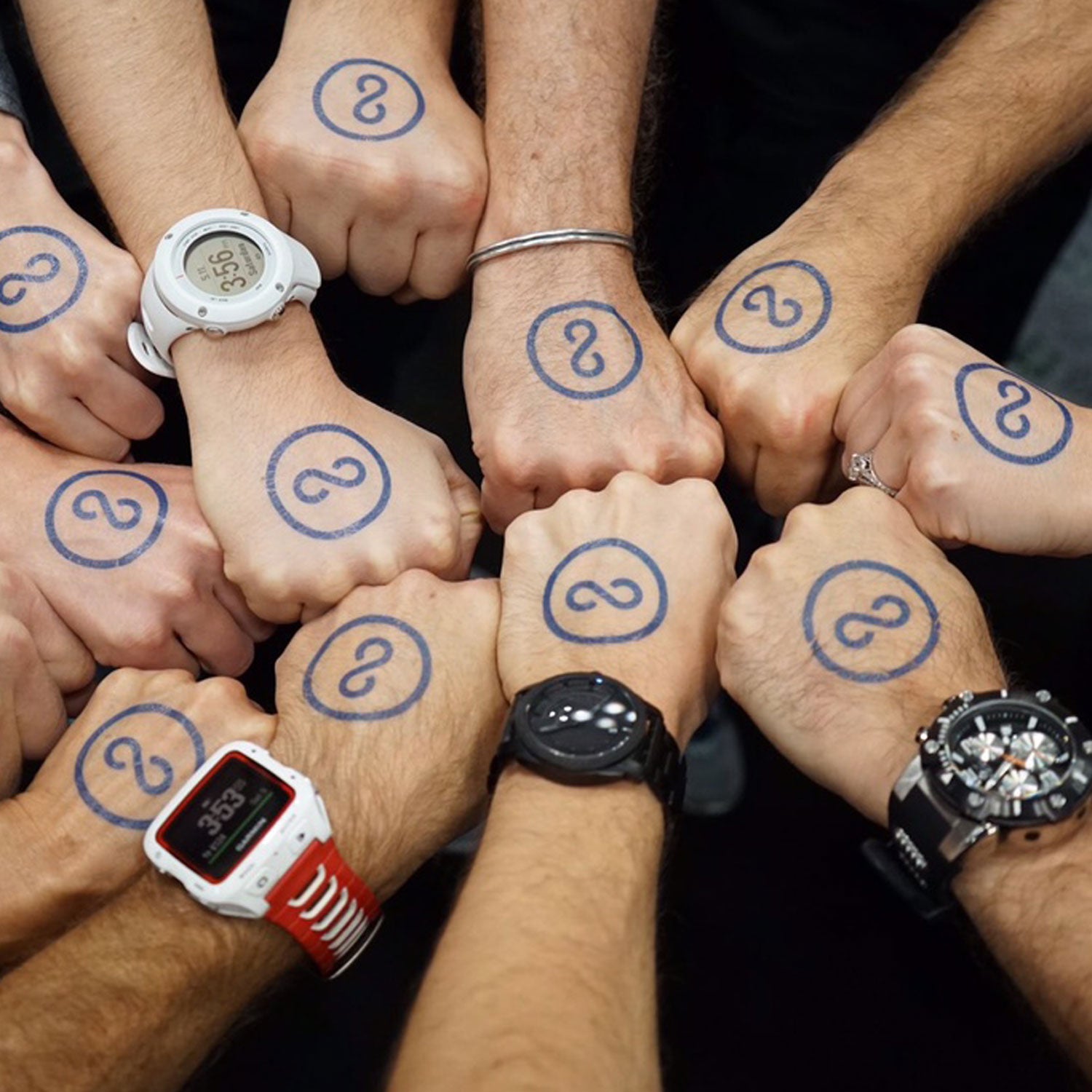Last week, numerous high-profile American runners, ultra-marathoners, and other endurance athletes posted photos of themselves on social media wearing a temporary tattoo of a broken infinity symbol. These athletes—including Kara Goucher, Jenny Simpson, Emma Coburn, Sage Canaday, and Rob Krar—were pledging their support for a new non-profit initiative called the Clean Sport Collective.
On its , the Clean Sport Collective describes itself as “a community of powerful voices comprised of athletes, brands, events, clubs, fans, and [the] public to support the pursuit of clean sport and athletics through the absence of performance enhancing drugs.” The site offers “charter pledges” tailored to athletes, fans, coaches, and even companies. The Collective encourages pledge-takers to spread the word on social media by tagging other potential members—an Ice Bucket Challenge for jocks, if you will.
While it’s easy to praise Clean Sport’s lofty credo, it’s worth asking: Can a social media campaign actually have a meaningful impact in the massive struggle against doping?
So far, the Collective has been most visible on the social media platforms of the athletes themselves. While that may bring attention to the campaign, it’s unlikely to create a holistic culture of clean sport. There will always be a degree of cultural and economic disparity among athletes from competing nations; the incentives and options for a U.S. runner who comes up through the NCAA system will be different than those for a runner from Russia or Kenya.
That’s why the Clean Sport Collective might end up doing the most good if it can bring about change from the top down: getting businesses to take more overt anti-doping stands. Athletes, coaches, and trainers already have anti-doping rules by which they must abide, but, in theory, brands can sponsor anyone they choose, regardless of doping history.
“Very few brands are taking a stand to outwardly say, ‘This is unacceptable and we will only have clean athletes on our team,’” said Kevin Rutherford, a Clean Sport Collective board member, when he talked to . “I’m hoping that by speaking out we can potentially bring more brands in.”
Brooks, Oiselle, Sketchers, Altra, and the electrolyte tablet company have already taken the Clean Sport Collective pledge. (Although, it’s worth noting that Rutherford serves as CEO of Nuun, which happens to be a client of a public relations agency called ModCraft, whose founders, Shanna and Kevin Burnette, started the Clean Sport Collective. While it’s unlikely that this overlap is entirely a coincidence, it hardly proves anything nefarious. The majority of athletes who have supported the Collective have no direct affiliation with ModCraft.)
Brands have the power to end doping if they wanted to.
But, as elite 800-meter runner and Collective supporter Nick Symmonds points out, there are several major brands that could have more to gain by turning a blind eye to doping—specifically, he points to Nike as a company that has a history of sponsoring former dopers.
Since Nike has more athletes on its roster than any other apparel company, it’s not surprising when a few of them turn out to be bad apples—marathoners and a being two recent examples. And the company has, in some cases, parted ways with those who have been caught using PEDs, such as defrocked sprinter Marion Jones and Lance Armstrong. But for many members of the athletics community, including Symmonds, Nike’s continued involvement with convicted dopers like Justin Gatlin and coach Dennis Mitchell is unforgivable. “I interpret that as Nike saying that they just want to have a Swoosh on whoever is on the podium, and they don’t really care that much about athletes’ backgrounds or moral convictions,” he says. Nike, for their part, said in a statement: “We strongly believe in clean sport and do not tolerate the use of performance enhancing drugs or methods. We believe in ethical and fair play in both business and sport.”
Technically, having Gatlin on their payroll makes Nike ineligible to sign the Clean Sport Collective charter, even if they wanted to. The first sentence of the charter for brands reads: “We pledge to support clean sport by sponsoring athletes who are committed to training, racing, and living clean, and not sponsoring athletes who have tested positive for performance enhancing drugs.” Nike, in the same statement, said: “Justin has served the ban that was imposed on him earlier in his career and has been competing without issue for the last five years. We don’t condone his former actions, but support the positive changes he made on the track.”
Although Shanna Burnette, co-founder of the Clean Sport Collective, agreed that re-signing an ex-doper like Justin Gatlin made Nike ineligible to join the Collective, she insisted that the company was not being specifically targeted. Several Nike-sponsored athletes—like Andrew Wheating, Phoebe Wright, and Amy Cragg—were on board from the start, says Burnette. The goal of the Collective is to be as inclusive as possible.
Even still, some athletes, including recently-retired runner Lauren Fleshman, would like to see the company itself on board. In early November, Fleshman challenged Nike to take the Clean Sport pledge over Twitter, indicating that doing so would free up millions of marketing dollars for clean athletes and make an important statement.
“Brands have the power to end doping if they wanted to—they can make a positive change by investing in clean athletes and investing in athletes who have never tested positive and taking a harder stance there,” says Burnette. “We do want to put more social pressure on brands to invest in athletes as humans.”
“We never hear Nike say, ‘We care about clean sport,'” says Fleshman. “I know that they are capable, as a company, of making bold statements. If they decided clean sport matters from the top, it would completely change the sport.”
But Nike also needs the people who buy their products. As I’ve noted before, it’s unrealistic to expect companies to do the right thing on their own—which is not to say that they never do—when the marketplace and consumer preferences takes precedence over ethics. If public outrage against drug cheats were to reach fever pitch, no company would want to risk association with athletes who have broken the rules.
In that sense, the responsibility lies with us.


